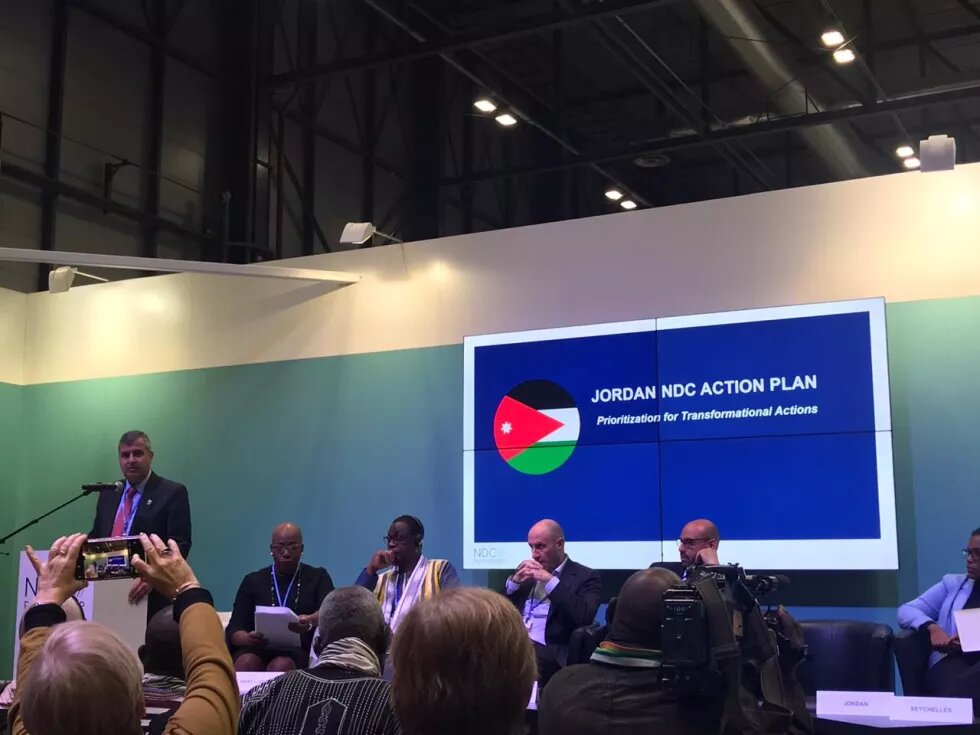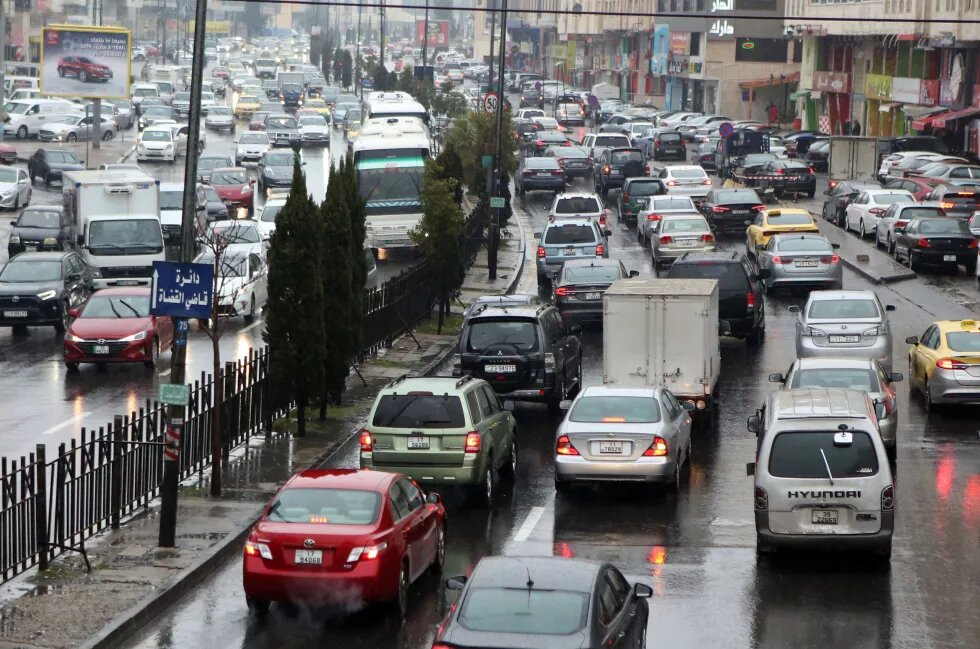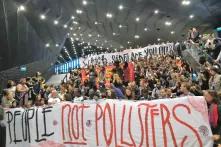

The United Nations Climate Change Conference (COP) is an annual two-week conference, which brings together representatives from 197 countries to negotiate strategies that address the mounting effects of human activities on climate change. Priority sectors are then identified as part of the unique problems that different countries face. Each country will submit a list of ‘nationally determined contributions (NDCs)’ that are essentially commitments which elaborate how countries intend to reduce their greenhouse gas emissions (GHG) and adapt to the impacts of climate change. During the 2019 conference (COP25), which took place in Madrid, Jordanian Minister of Environment H.E Dr. Saleh al Kharabsheh was part of a panel on the NDC partnership, where he covered Jordan’s priority sectors: Energy, transport, water, health, and agriculture.
Jordan’s NDCs include a commitment to achieve a 14% reduction in GHG emissions by 2030 compared to business as usual. Jordan pledged that 1.5% are unconditional reductions that the government must realize through their own means (Jordan’s INDCs). The remaining 12.5% are conditional depending on the availability of international financial support for projects associated with GHG reduction. The 14% reduction is not determined in a specific sectoral plan, but rather as part of 77 measures identified across the different sectors that can help achieve this.
The transportation sector in Jordan has many citizens frustrated. Its seemingly continuous deterioration has been a cause of concern, since the capital Amman’s streets have reached peak congestion levels without any significant signs of improvement in sight. Jordan is witnessing high rates of urbanization, with Amman housing 4.2 million residents (42% of the total population). The connection between transportation and urbanization is mainly due to the increased transport demand that results from living in the city. In Amman, cars are satisfying most of motorized demand, and the rest of the country is following its example. The last five years alone have seen an average annual increase of 5.3% vehicles per year (Jordan Traffic Department), which is alarming because more people are choosing to drive, and also emphasizes the general need for a reliable source of mobility.
When it comes to GHG emissions, transportation is Jordan’s second largest culprit - with 16% of total national emissions- after energy use for electricity and heating (UNFCCC). Given our steadily growing private automobile fleet (including SUVs and light duty trucks), it makes sense to make transportation a priority sector for mitigation. Jordan has a myriad of national issues that contribute to the country’s economic hardships, with water and energy scarcity at the top of the list. Many efforts have been and continue to be poured into these two sectors, which is understandable, yet may have shifted some of the focus from other key sectors. Transport happens to be one of these sectors, and it is linked in multiple ways to other sectors including the economy, health, and the environment.
Public transport dependency in Jordan is extremely low at 13% (UITP MENA Report). The majority of users are considered captive users, meaning they are incapable of accessing other transport alternatives and are therefore forced to use the public transport system. For a country that is growing rapidly, this is clearly unsustainable. However, it also presents an opportunity to address a mounting issue that supports Jordan’s climate commitments.
Studies conducted on youth unemployment and job accessibility in Jordan have highlighted the importance of developing public transport in order to improve job retention and female participation in the job market. These connections to different sectors provide an important indicator of where some of the country’s climate financing should go. In the case of urban transportation, the goal should be to provide a system that shifts the current dependency on private automobiles towards more sustainable alternatives. This is especially true considering the fact that on average, each vehicle in Jordan is occupied by a mere 1.3 passengers (Jordan Times).
Developing the city’s transportation system comes with a number of positive outcomes. Many jobs are created within the transportation sector as part of the improved and expanded service. Most importantly, improved connectivity within and between cities allows for a more just society that provides freedom of movement to its citizens. When it comes to mitigating emissions, providing a mass transit alternative to the private automobile is essential to not only service current car-owners, but to also avoid future ones.
The interdisciplinary nature of the transport field requires the development of other city elements such as pedestrian infrastructure and public spaces in order to encourage and enable public transport systems. Once an environment based on sustainable transport planning is established, policies that reinforce it need to be formed in order to ensure that people use it. I believe that a system of carrots and sticks needs to be introduced in order to incentivize and reward people who use public transport and discourage people from driving. Incentives can be as simple as providing dedicated lanes and subsidized fares on public transportation, and the sticks or punishments can be something like introducing parking fees in business districts.
Globally, transport NDCs currently account for only 10% even though transportation is associated with 14% of worldwide emissions. This significant portion will only increase if population growth rates and current urbanization trends persist. Certain countries such as Germany and Japan have some more progressive transportation measures in the works, which combine their strong public transport systems with electric vehicle innovation and optimization. I believe that these countries recognize the importance of the transportation sector in the well-being of their citizens and are actively pursuing ways to meet their increased demands with better governance and cleaner options.
Addressing the deteriorating transportation sector in Jordan is something the government is already attempting to prioritize through its ongoing efforts to initiate the Bus Rapid Transit (BRT) system in Amman and Zarqa. The latest climate change commitments offer a unique opportunity to obtain funding and incorporate sustainable city planning principles within the solutions for this sector. Developing this sector is an absolute priority, and capitalizing on this opportunity is imperative given the established links between transportation and GHG mitigation.
Sources:
-
Jordan INDC document: https://www4.unfccc.int/sites/ndcstaging/PublishedDocuments/Jordan%20First/Jordan%20INDCs%20Final.pdf
-
Jordan DOS: http://dosweb.dos.gov.jo
-
Jordan Central Traffic Authority: https://www.psd.gov.jo/images/jti/2018.pdf




